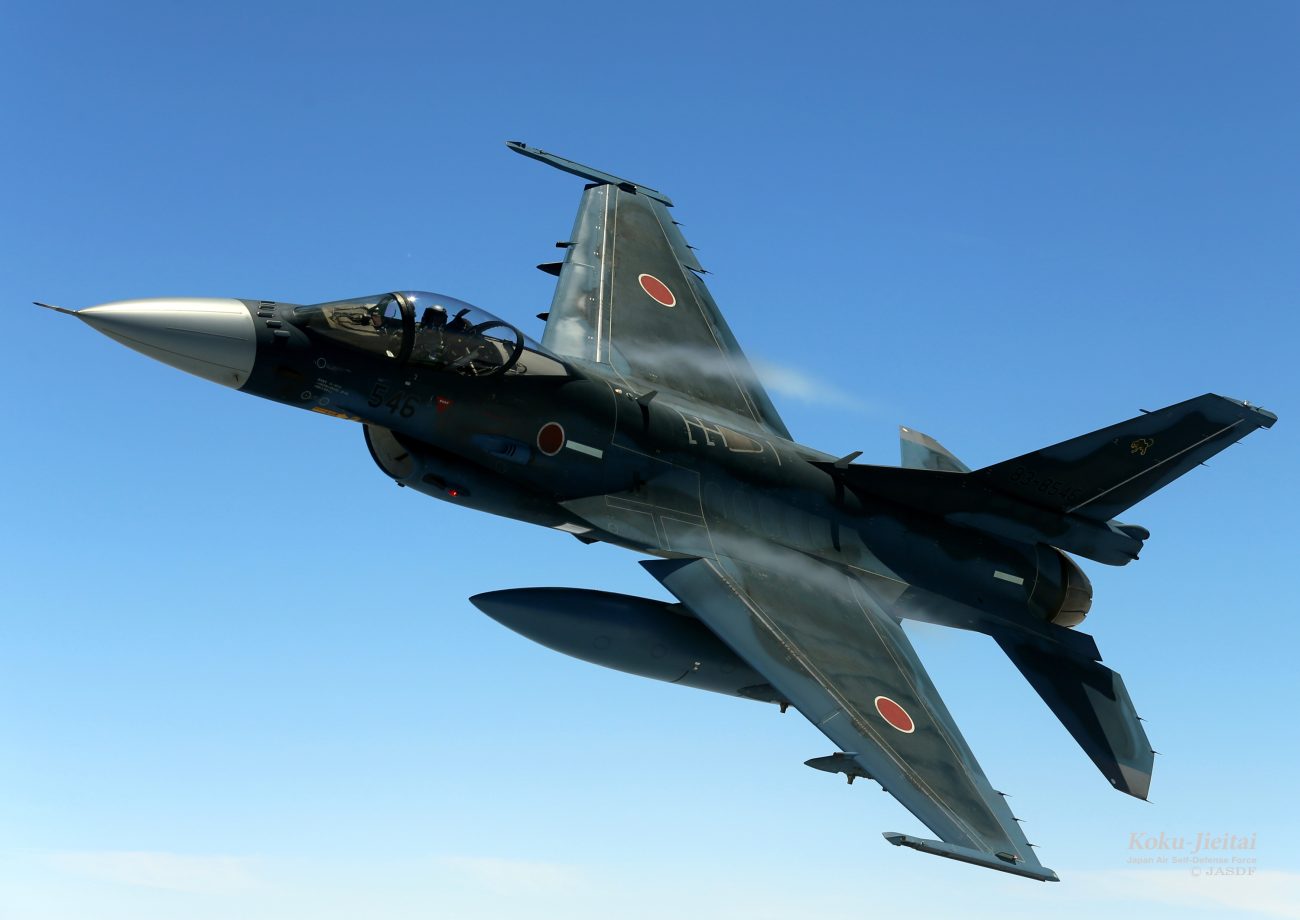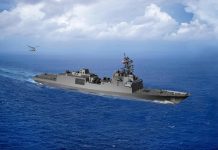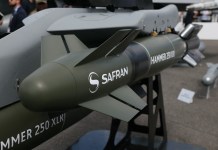Japan’s F-2 fighter jet, which is based on the American F-16, took to the skies for the first time thirty years ago. Now, Tokyo is investing in developing a sixth-generation aircraft that will replace these legacy aircraft.
The Mitsubishi F-2, also popularly known as “Viper Zero”, is a multirole fighter aircraft that was developed primarily for the Japan Air Self-Defense Forces (JASDF).
It was born as a joint Japanese-American program to develop a cutting-edge replacement for Japan’s outdated Mitsubishi F-1 support fighter by leveraging the Asian country’s domestic manufacturing skills and the American combat aviation technology.
Mitsubishi Heavy Industries (MHI) was the prime contractor, and US defense giant, Lockheed Martin Aeronautics Company, served as the principal US subcontractor.
The first F-2 prototype, a single-seat variant called XF-2A, took its first flight on October 7, 1995, at the Komaki Air Base, Japan. It was piloted by Mitsubishi test pilot Yoshiyuki Watanabe, who had extensive experience.
The flight reportedly lasted 38 minutes and focused on basic performance calibration, handling qualities, and vibration/flutter checks. It involved takeoff, climb to test altitudes, stability assessments, and a safe landing.
The maiden flight of the F-2 was considered a pivotal milestone as it validated the design developed after years of collaboration between Japan and the United States. By March 1996, it had logged 14 sorties. The second XF-2A (63-0002) flew on December 13, 1995, focusing on loads and Electronic Warfare (EW) systems.
The flights led to the discovery of several weaknesses, particularly in the recently built fiber composite wings. These findings were immediately integrated into the modified aircraft before it entered serial production.
The delivery of the first F-2 production models started in 2000. The first of these aircraft entered service with the 3rd Fighter Squadron at Misawa Air Base, replacing F-1s and complementing F-15Js.
Thirty years later, Japan is now developing a sixth-generation fighter jet under the ‘Global Combat Air Program’ in collaboration with the United Kingdom and Italy, to replace these aging jets.
Interestingly, this is the first time in decades that Tokyo is pursuing a fighter jet program with countries other than the United States, which is its closest ally and its most reliable defense partner. On the contrary, the US is developing its own sixth-generation fighter called F-47, currently a rival to the GCAP.
The sixth-generation aircraft developed under the GCAP has an aspirational schedule: it will take its first flight in 2027 and become operational by 2035. This means that the F-2s will remain in service for at least another decade before they start getting decommissioned in favour of the new-generation combat aircraft.

How Was The F-2 Conceived?
In the early 1980s, Japan sought to modernize its air force with a domestically designed multirole fighter.
Drawing from experience in licensed production of the F-15J Eagle, Japanese contractors like Mitsubishi Heavy Industries (MHI) pushed for an indigenous design to build domestic aerospace expertise.
However, the US reportedly advocated for co-development of an existing design to ensure interoperability and cost efficiency, proposing variants of the F-16 Fighting Falcon or F/A-18 Hornet.
In 1987, the JASDF selected a variant of the F-16C as the Japanese FS-X aircraft to replace the Mitsubishi F-1 aircraft.
General Dynamics, which is now part of Lockheed Martin, and MHI signed a co-development agreement in 1988. This is how the F-2 was conceptualised. The program aimed for a fighter optimized for air-to-air combat, close air support, and anti-ship missions, tailored to Japan’s island geography and regional threats.
As part of the program, technology was transferred from the United States to Japan, with the US sharing 40% of the cost and Japan footing 60%.
Several analysts have noted that Japan decided to develop the F-2 due to pressure from the United States. Originally intended to be a “pure” Japanese fighter, the F-2 was to integrate the most recent technological advancements. However, it became a copy of the F-16 as Japan could not produce a fighter jet domestically.
However, it featured a host of structural, avionics, and capability enhancements over the baseline F-16. For example, it had a larger wing area, a longer fuselage, and employed co-cured composite materials in its wings and tail, which was a first for operational fighters at the time.
Additionally, the F-2 features a stronger, one-piece canopy with improved bird-strike resistance, unlike the F-16’s standard canopy.
Most notably, the F-2 was equipped with the Mitsubishi Electric J/APG-1 Active Electronically Scanned Array (AESA) radar, the first of its kind in a production fighter.
This radar offers superior detection, tracking, and resistance to jamming compared to the F-16C’s mechanically scanned AN/APG-68 radar. Furthermore, the F-2 featured an integrated Japanese-developed electronic countermeasures (ECM) system, which was significantly more advanced than the F-16’s and tailored for maritime threat environments.
While both aircraft used the General Electric F110-GE-129 engine, the F-2’s engine was optimized for Japan’s maritime missions, with slight tuning differences for low-altitude performance. Moreover, F-2’s hardpoints were optimized for heavier anti-ship loads as compared to the F-16, which supported a broader range of NATO-standard munitions.
According to a US-based think tank, CSIS, the US was concerned that Japan’s push for a domestically made aircraft might result in a complete failure.
Japan, in turn, was dissatisfied with what it regarded as a US power maneuver to deny Japanese access to vital defense technologies. The compromise that resulted was the F-2, an arrangement that worked for both parties in the 1990 international security context.
Some reports suggest that the country had difficulties upgrading the aircraft due to Lockheed Martin’s reluctance to transfer the technology needed for the requisite upgrades.
The first FS-X prototype made its maiden flight on October 7, 1995, followed by four more prototypes that were built and tested extensively for flight performance, weapons integration, and avionics.

The program transitioned to full production in 1996, with the aircraft redesignated as the F-2. The F-2 was manufactured in two variants: the F-2A, a single-seat fighter version, and the F-2B, a double-seat trainer version.
Japan wanted to develop a third, upgraded aircraft variant—the F-2A Super Kai—featuring conformal fuel tanks and sniper targeting pods. However, the idea was shelved when Tokyo decided to purchase the fifth-generation F-35 Lightning II aircraft from Lockheed Martin.
While classified as a support fighter, the F-2 was designed to serve as a platform for the Japan Air Self-Defense Force (JASDF) to effectively address threats posed by regional adversaries such as North Korea and China.
However, unlike the American F-16s, which have flown multiple combat missions worldwide, the aircraft did not see any combat in its nearly 30-year service.
The official website of Lockheed Martin states: “In 2015, the F-2 became the eighth aircraft platform to be equipped with Lockheed Martin’s Sniper Advanced Targeting Pod…The F-2 has a wing area enlarged approximately 25 percent over the F-16 wing area. The larger wing allows more internal fuel storage and two more weapon store stations than the F-16…In addition to the larger wing area, the F-2 fuselage is approximately 17 inches longer than that of the F-16. The horizontal tails are also larger.”
Meanwhile, the MHI states, “F2 achieves a better maneuvering capability, with the introduction of an integral structure using a composite material and maximizing the wingspan. Also, with the use of various high-tech materials and structural technology, we have succeeded in making the wings lighter. In avionics, the newest technological domestically oriented equipment has been installed, such as an integrated electronic warfare system and an onboard computer.”
According to Mitsubishi, radio wave absorption materials were used to enhance the aircraft’s stealth and Control Configured Vehicle (CCV) capabilities, while the engine was given extra thrust to boost takeoff and landing capabilities. The aircraft has been a force to reckon with despite barely having the opportunity to prove its might in combat.
The F-2 has been frequently criticized, even though it is a stalwart of the JASDF. Critics have pointed out that the plane has been too expensive for Japan and that there hasn’t been much of an improvement over the standard F-16.
Some others say that the F-2, characterized by its compact radar and single-engine configuration, has been less effective than the older F-15 Eagles.
Since at least 2019-2020, the proponents of Japan’s military modernization have observed that the aging F-2 aircraft are inadequate to counter the Chinese People’s Liberation Army Air Force (PLAAF). This has led to an accelerated effort in developing the next-generation fighter, besides ramping up other capabilities.
- Contact the author at sakshi.tiwari13 (at) outlook.com
- Follow EurAsian Times on Google News




